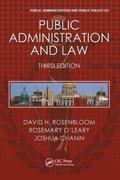Question
In the long-run (i.e., across seasons), the monopolist/team sets its profit-maximizing winning percent (WPCT), purchases of talent (T), and the payroll (PAY). Draw a graph
In the long-run (i.e., across seasons), the monopolist/team sets its profit-maximizing winning percent (WPCT), purchases of talent (T), and the payroll (PAY).Draw a graph illustrating this long-run equilibrium (WPCT*, T*, and PAY*).
In the short-run (i.e., within a season), the monopolist/team sets its profit-maximizing ticket price (P) and quantity of tickets sold (Q). Draw a graph illustrating this short-run equilibrium, (Q*, P*), where Q* results in empty seats in the stadium (i.e., Q* < QCAP).
Graphs are required, do not only answer with texts.
Step by Step Solution
There are 3 Steps involved in it
Step: 1

Get Instant Access to Expert-Tailored Solutions
See step-by-step solutions with expert insights and AI powered tools for academic success
Step: 2

Step: 3

Ace Your Homework with AI
Get the answers you need in no time with our AI-driven, step-by-step assistance
Get Started


